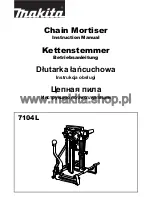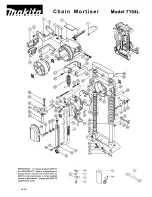
SPLINTER-FREE CUTTING
• Always face the good side of the
workpiece down - secure a straight piece
of wood on the workpiece using clamps.
CUTTING HARD OR ABRASIVE
MATERIALS
SOFT SHEET METAL
Only use for cutting brass, copper,
aluminium or galvanized mild steel.
• Always set the depth adjustment to at
least 1 mm deeper than the material
thickness to avoid the blade riding
up over the surface. Scrap material is
required underneath the work surface.
• Remove burrs and rust as these impede
the feed across the material.
• Thick beeswax (furniture polish) applied
to the base plate of the tool makes
metal cutting easier.
• Every 2 minutes of metal cutting operation
should be followed by at least 3 minutes
of non operation to allow the blade to cool
to a safe operating temperature.
CERAMIC TILES
• Only use a blade specifically designed
for this purpose.
• Always use with a suitable vacuum
cleaner or dust extractor connected
as the dust can be hazardous to
the operator and prevent the guard
operating correctly.
WALLBOARD
• The plunge saw is only recommended
for making occasional cut outs in
plasterboard and always use it with
a suitable vacuum cleaner or dust
extractor connected. The dust can
prevent the guard operating correctly.
11
cutting wood, aluminium, plastic and all
sorts of laminated wood
• Use diamond saw for (16) cutting
ceramics and tiles
• Use carbide-tipped blade (18) for wood
and plastic only
hard
soft
16
17
hard
18
17
18
CUTTING LARGE PANELS (FIG. 18)
WARNING:
Set cutting depth so that
you cut through panel and not through
support.
• Support panel close to the cut either on
floor, table or workbench.
• In case parallel guide does not allow
desired width of cut, clamp or nail
straight piece of wood to workpiece as
a guide, and use the right side of the
foot against this guide.












































